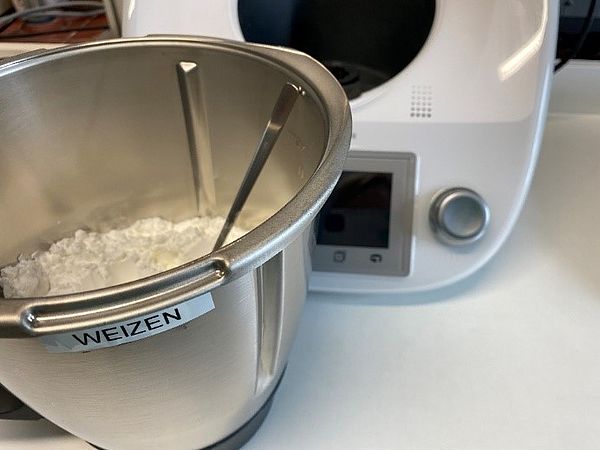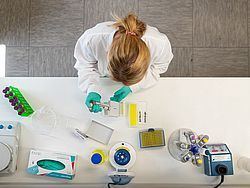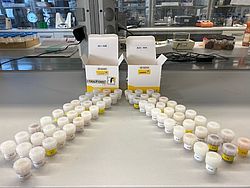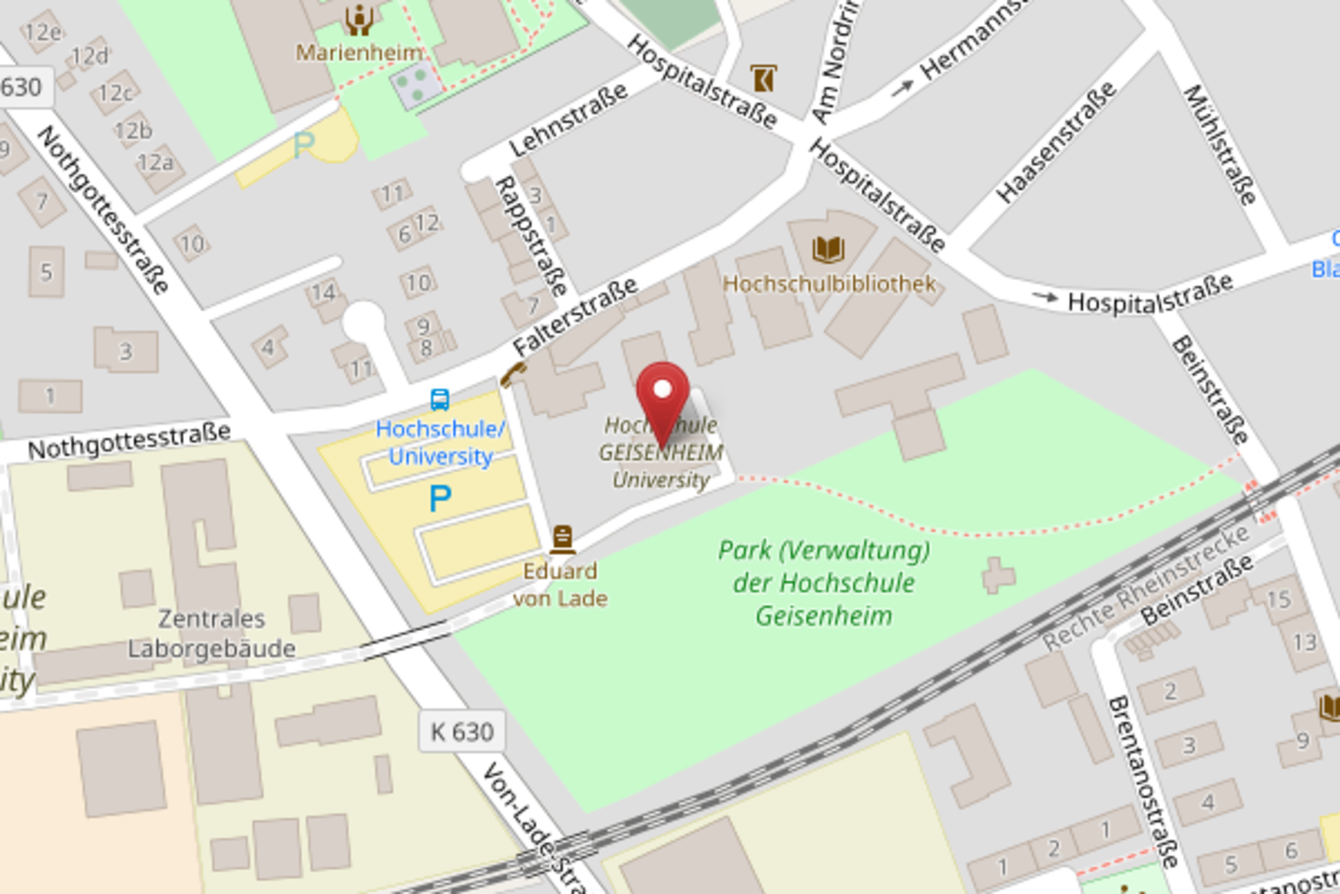Wheat flour and gluten are an integral part of our diet and a major component of various food products because of their useful effects on texture, taste and moisture-retention. Gluten is a mixture of gliadin and glutenin proteins present in wheat. An estimated five percent of the world’s population, however, suffer from gluten-related disorders. Gluten intolerance (also called celiac disease) refers to the body’s inability to break down certain proteins. These proteins pass through the epithelial layer of the small intestine and cause an immune response that triggers the body to attack its own proteins (autoimmune disease). As with other autoimmune diseases, there is a genetic predisposition to celiac disease, yet only a fraction of affected individuals develop the disease. For these individuals, the consumption of gluten causes, among other things, an inflammation of the small intestine and leads to a reduced ability to absorb nutrients. Therefore, a gluten-free diet is essential for those affected.
The Department of Food Safety at Hochschule Geisenheim University has recently participated in an interlaboratory study focussing on the detection of gluten by producing a range of foodstuffs and adding gluten/gliadin in varying concentrations. Subsequently, the target gluten/gliadin values of these samples were determined in 14 laboratories worldwide.
Foods that contain no more than 20 mg gluten per kilo may be labeled “gluten-free” according to the Codex Alimentarius (CODEX STAN 118/1979). Many national legislators have taken up this limit, meaning that specific and sensitive analytical methods are required to control the quality of foods that are labeled “gluten-free”. Immunochemical methods are currently recommended for the detection of gluten in food. Among others, the R5 antibody method has been used for detecting and quantifying the gluten content in products since its introduction in 2002.
One of the commercial enzyme-linked immunosorbent assay (ELISA) tests based on this analytical method is the RIDASCREEN® Gliadin R7001 test from the company R-Biopharm AG. In order to demonstrate that this ELISA test can be applied for different foods, an interlaboratory study was performed according to the guidelines of the Association of Official Analytical Collaboration (AOAC).
Hochschule Geisenheim University’s Department of Food Safety participated in the study by preparing food matrices contaminated with gluten/gliadin, which served as samples. When selecting the samples, special attention was paid to including a broad spectrum of food categories, such as soy, starch, pseudo cereals, beans, peas and other pulses, spices, juice, chocolate and hazelnut spread, cream cheese, pesto, meat, vegetarian meat alternatives, cookies, dessert, baked goods, fish, bread, sweets and potatoes.
In a first step, the foodstuffs, raw materials or ingredients required for the various product groups had to be procured, which were then tested by the Department of Food Safety to make sure that they are free from gliadin using the ELISA test. In a next step, 32 contaminated food matrices were prepared, which were mixed with specific gluten or gliadin concentrations. Afterwards, most of the foods were heat-processed through boiling, backing or frying. Finally, these samples were analyzed for homogeneity by using ELISA. In addition, a food matrix without contamination was prepared for each product, which served as a control sample, the so-called negative sample.
After preparation, these samples were diluted to reach the desired concentration of gluten/gliadin. The finished foodstuffs were aliquoted, labeled according to a special blinding procedure that was double-checked by a second staff member, and frozen. In total, 1,280 food aliquots were prepared by the department’s staff, Lisa Zimmermann B.Sc. and Dipl.-Ing. Teresa-Maria Schinabeck, in September and October 2020.
Subsequently, both the samples contaminated with gluten/gliadin and the negative samples, i.e. the 1,280 food aliquots, were sent by R-Biopharm AG to 14 different laboratories worldwide, where they were independently analyzed for their target gluten/gliadin value. Finally, all steps in the preparation of the food samples were described and summarized in a report in English. As an independent external expert, Prof. Dr. Katharina Scherf from the Karlsruhe Institute of Applied Biosciences, Department of Bioactive and Functional Food Chemistry, coordinated and supervised the interlaboratory study. The results will be published in the Journal of AOAC International soon.
Contributed by Lisa Zimmermann B.Sc., Dipl.-Ing. Teresa-Maria Schinabeck, Prof. Dr. Simone Loos-Theisen – Department of Food Safety






